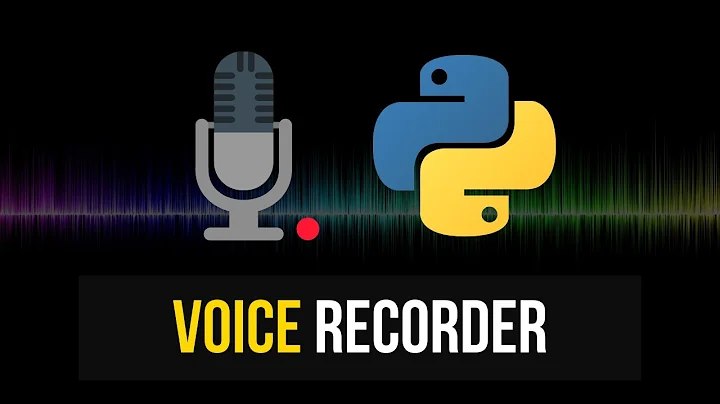record audio from user and save to server
Solution 1
Using XMLHttpRequest to post wav or mp3 blobs to server is simple.
Just run this code wherever you have access to the blob element:
var xhr=new XMLHttpRequest();
xhr.onload=function(e) {
if(this.readyState === 4) {
console.log("Server returned: ",e.target.responseText);
}
};
var fd=new FormData();
fd.append("audio_data",blob, "filename");
xhr.open("POST","upload.php",true);
xhr.send(fd);
I prefer XMLHttpRequest to $.ajax() because it does not require jQuery.
Server-side, upload.php is as simple as:
$input = $_FILES['audio_data']['tmp_name']; //temporary name that PHP gave to the uploaded file
$output = $_FILES['audio_data']['name'].".wav"; //letting the client control the filename is a rather bad idea
//move the file from temp name to local folder using $output name
move_uploaded_file($input, $output)
Source: https://addpipe.com/blog/using-recorder-js-to-capture-wav-audio-in-your-html5-web-site/ Live demo: https://addpipe.com/simple-recorderjs-demo/
Solution 2
I figured out one solution, but would still welcome others related to recorderjs. I used MP3RecorderJS at https://github.com/icatcher-at/MP3RecorderJS. The demo html works if you change the top of the html from src="js/jquery.min.js" and src="js/mp3recorder.js" to wherever they're located in your server. For me, it is src="jquery.min.js" and src="mp3recorder.js" I also had to do the same thing to the "mp3recorder.js" file: var RECORDER_WORKER_PATH = 'js/recorderWorker.js'; var ENCODER_WORKER_PATH = 'js/mp3Worker.js'; changed to var RECORDER_WORKER_PATH = 'recorderWorker.js'; var ENCODER_WORKER_PATH = 'mp3Worker.js';
The program is set up to record both mp3 and wav. I wanted wav, so I made a few more adjustments to the html file. At line 55 you'll find:
recorderObject.exportMP3(function(base64_mp3_data) {
var url = 'data:audio/mp3;base64,' + base64_mp3_data;
var au = document.createElement('audio');
I changed that to:
recorderObject.exportWAV(function(base64_wav_data) {
var url = 'data:audio/wav;base64,' + base64_wav_data;
var au = document.createElement('audio');
The demo appends a new player each time you record. To prevent this, I deleted (commented out) the $recorder.append(au); part, made a new div to store the audio player, and then I clear that div each time, before the audio player is created. To upload to my server, I used a technique I learned from uploading images to a server save canvas image to server Basically, the "url" variable in line 56 was what I needed, but couldn't figure out how to put it in a universal variable to use by another function. So, I made a hidden div and made the contents of it equal to "url". I then referenced that div in a new function called "upload". I then used a php file called "uploadWav.php". I still have to figure out a way to activate and deactivate the upload button to prevent the user from uploading a blank file before recording, but that's another issue. Here's the final html and php that worked for me:
<!DOCTYPE html>
<html>
<head>
<meta http-equiv="Content-type" content="text/html; charset=utf-8">
<title>MP3 Recorder test</title>
</head>
<body id="index" onload="">
<script type="text/javascript" src="jquery.min.js"></script>
<script type="text/javascript" src="mp3recorder.js"></script>
<script type="text/javascript">
var audio_context;
function __log(e, data) {
log.innerHTML += "\n" + e + " " + (data || '');
}
$(function() {
try {
// webkit shim
window.AudioContext = window.AudioContext || window.webkitAudioContext;
navigator.getUserMedia = ( navigator.getUserMedia ||
navigator.webkitGetUserMedia ||
navigator.mozGetUserMedia ||
navigator.msGetUserMedia);
window.URL = window.URL || window.webkitURL;
var audio_context = new AudioContext;
__log('Audio context set up.');
__log('navigator.getUserMedia ' + (navigator.getUserMedia ? 'available.' : 'not present!'));
} catch (e) {
alert('No web audio support in this browser!');
}
$('.recorder .start').on('click', function() {
$this = $(this);
$recorder = $this.parent();
navigator.getUserMedia({audio: true}, function(stream) {
var recorderObject = new MP3Recorder(audio_context, stream, { statusContainer: $recorder.find('.status'), statusMethod: 'replace' });
$recorder.data('recorderObject', recorderObject);
recorderObject.start();
}, function(e) { });
});
$('.recorder .stop').on('click', function() {
$this = $(this);
$recorder = $this.parent();
recorderObject = $recorder.data('recorderObject');
recorderObject.stop();
recorderObject.exportWAV(function(base64_wav_data) {
var url = 'data:audio/wav;base64,' + base64_wav_data;
var au = document.createElement('audio');
document.getElementById("playerContainer").innerHTML = "";
//console.log(url)
var duc = document.getElementById("dataUrlcontainer");
duc.innerHTML = url;
au.controls = true;
au.src = url;
//$recorder.append(au);
$('#playerContainer').append(au);
recorderObject.logStatus('');
});
});
});
</script>
<script>
function upload(){
var dataURL = document.getElementById("dataUrlcontainer").innerHTML;
$.ajax({
type: "POST",
url: "uploadWav.php",
data: {
wavBase64: dataURL
}
}).done(function(o) {
console.log('saved');
});
}
</script>
<div class="recorder">
Recorder 1
<input type="button" class="start" value="Record" />
<input type="button" class="stop" value="Stop" />
<pre class="status"></pre>
</div>
<div><button onclick="upload()">Upload</button></div>
<div id="playerContainer"></div>
<div id="dataUrlcontainer" hidden></div>
<pre id="log"></pre>
</body>
</html>
and the "uploadWav.php" file:
<?php
// requires php5
define('UPLOAD_DIR', 'uploads/');
$img = $_POST['wavBase64'];
$img = str_replace('data:audio/wav;base64,', '', $img);
$img = str_replace(' ', '+', $img);
$data = base64_decode($img);
$file = UPLOAD_DIR . uniqid() . '.wav';
$success = file_put_contents($file, $data);
print $success ? $file : 'Unable to save the file.';
?>
Related videos on Youtube
user3080392
Updated on July 13, 2020Comments
-
user3080392 almost 4 years
I'm trying to record audio from a website user and save the audio to my server. Many of the posts I have studied so far have referenced Matt Diamond's recorderjs. I attempted to recreate the demo at http://webaudiodemos.appspot.com/AudioRecorder/index.html by opening the source code through my browser. I copied the html, "audiodisplay.js", "recorder.js", and "main.js" and put them on my server. I also added the "recorderWorker.js" file from his GitHub site. In the recorder.js file, I changed var WORKER_PATH = 'js/recorderjs/recorderWorker.js' to var WORKER_PATH = 'recorderWorker.js';
When I run the demo I set up, I'm getting the "would you like to share your microphone.." warning and I can start the recording by pressing the mic icon on the right side. However, when I stop recording, the audio waveform doesn't show up below like in Matt's demo and the save icon doesn't become activated.
If I can get the demo up and running, the next problem I have is saving the wav file to the server instead of locally like in the demo. I've found several posts saying to use XMLHttpRequest(), however I can't really figure out how to connect those examples to recorderjs. Saving WAV File Recorded in Chrome to Server HTML5 & getUserMedia - Record Audio & Save to Web Server after Certain Time RecorderJS uploading recorded blob via AJAX
-
 Ael over 6 yearsDead github link.
Ael over 6 yearsDead github link. -
Zedd about 3 yearsThis github link from @AliRasouli is dead too man...








